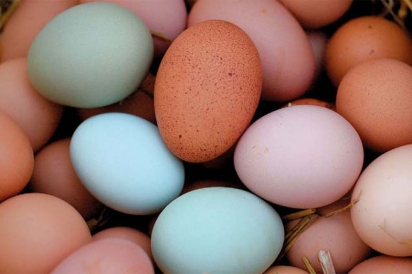Talk Dirty to Me: On Backyard Chickens, Gray Water, Garden Pests
Summer 2013
Farmer Brooke-
We have decided to raise backyard chickens. We have read the books, the coop is ready, and now we just need to find chickens! Where can we purchase them locally?
-Stephanie Smith
Yay for backyard birds! I am an avid city bird enthusiast and I encourage all of you to follow in Stephanie’s footsteps. After all, Chickens are the quintessential element to any homestead (urban or otherwise). They are functional and fabulous pets that provide fresh, nutritious eggs. Furthermore, you can get rid of the ol’ TV cuz these girls are endless entertainment for the whole family! Unlike dogs and other common household pets, chickens are easy to care for, non-needy, self-sufficient to a great degree, and relatively inexpensive. They pay your feed cost back with not just eggs, but free weed & bug control, and the best organic fertilizer on earth!!
Enough chicken propaganda…let’s focus on Stephanie’s question –
Soon-to-be chicken owners can either purchase hens that are a few months old and ready to lay eggs or raise day-old chicks. I encourage people to raise chicks for the incredibly fun & satisfying experience. We order all our chicks from Cackle Hatchery in Lebanon, MO (cacklehatchery.com). Cackle is a family business that has been hatching chicks since 1936. They offer many types of chickens including heritage egg layers, meat birds, rare breeds, bantams, as well as ducks, geese, turkeys, and more. They run a “city-town pullet special” for city folks who don’t want to order a large number of chicks. The chicks will arrive in the mail at only a couple days old. They will immediately need to be put into a warm brooder and given plenty of water and food. Instructions will be sent with your birds, but I advise reading up on “chick care” in advance. When you visit Cackle’s website to order your chicks, you will be overwhelmed with the many varieties and have trouble making up your mind. Chickens come in every shape, size, and color and have very specific traits. If you have kids, you’ll want birds that are fairly calm and docile. I suggest the black-and-white-checked Plymouth Rock (also known as Barred Rock). If you want the best egg layer possible, I suggest Rhode Island Reds (a heritage breed that puts out close to 300 eggs per year). If you want “easter eggs” every day of the week, I suggest Araucanas (feisty little birds with colorful feathers that lay gorgeous eggs of varying shades of blue and green).
For a great reference check out Henderson’s Handy Dandy Chicken Chart listing over 60 breeds with comparative information – ithaca.edu/staff/jhenderson/chooks/chooks.html
Farmer Brooke-
Does Urbavore Farm recycle gray water to irrigate crops, and what would you suggest to homeowners wanting to do the same for home gardens, without investing in expensive changes to do so?
Thanks,Carly – Lone Jack, MO
URBAVORE is in the process of taking raw land and transforming it into a passive solar off-grid farmstead. Our first infrastructural project is our home. Right off the bat I should mention that because we need to adhere to city building codes and standards, there is nothing simple or cheap about the off-grid, “green” systems that will be a part of the house. We will be recycling both gray and black water through a specially engineered septic system (that uses zero chemicals and toxins). Waste water from the shower, sinks, washing machine, and non-solids from the composting toilet will run through a sand filter and into a large cistern where the water will be stored and used to irrigate the green house, vegetable fields, and orchards.
For DIY homeowners who don’t want to invest in expensive systems or over-haul the plumbing in their homes, it is possible to create your own grey water systems. The first step would be to separate the piping from your sink, shower, and/or washing machine so that it runs into a specific place. This place could be as simple as a “leach field” or an area of your landscaping with water-loving plants and trees. Or it could be run through a homemade marsh filtration system (a series of plants and rocks that purify the water) and into a storage tank for specific uses in the garden. This water could even be re-used for applications in the home. Check out this short & sweet youtube video documenting one man’s frontloading washer draining into an incredibly simple plant filtration system constructed in a utility sink. The water then drains into a homemade grey water system used to flush the toilet!!
Here’s another link detailing a $150 homemade system that drains laundry water into the garden.
blog.makezine.com/projects/backyard- graywater-system/
It is important to understand that with any gray water system you must STOP using harsh chemicals in the home. All soaps and cleaning products should be natural and 100% biodegradable. (Even if you don’t have a gray water system you should exercise your environmental responsibility and stop using chemicals!!). Lastly, it is also VERY IMPORTANT to understand that depending on your locale and specific zoning codes, DIY gray water systems are illegal. Sometimes we gotta break the law for the greater good of our environment, BUT we should be well informed and make sure we don’t do anything that could upset neighbors or effect the landscape negatively. Happy water recycling!
Farmer Brooke-
What are some easy yet effective organic pesticides that you recommend making from material we may already have at home, and specifically what pests will they get rid of? I had my squash vines and melons absolutely decimated last year by a grayish looking bug that looks like it has armor on. I’ve not had luck identifying it online either. They seemed immune to everything organic I tried. I’m going to guess it was some kind of squash boring beetle thing. I don’t want to have to return to chemicals, but I also don’t want to lose all my hard earned garden bounty. Help!
-Anita Excelsior Springs
Ooooh man…I feel Anita’s pain!! To be honest, cucurbits (winter squash, summer squash, cucumbers, and melons) are among the hardest crops to grow organically. That said, as a die-hard organic farmer, toxic chemicals are simply not an option. As far as homemade organic pesticides go, garlic sprays, hot pepper sprays, and simple soaps are some of the more common ones. Here is a wonderful link to “15 Homemade Organic Gardening Sprays & Concoctions That Actually Work” – tlc.howstuffworks.com/home/homemade- organic-gardening-sprays.htm
However, while these concoctions are effective against many pests, there is no easy solution for cucurbit pests. The “players” in the squash massacre are as follows:
Squash Bugs – the 16 mm hard-shelled oval-shaped bugs with a dark brown appearance that literally cover your plants, and fruit. Gray mottling can be see on it’s backside and yellow mottling on it’s underside. They put off a horrible odor when squashed. (I believe this is what Anita is referring to)
Stink Bugs – Incredibly similar looking to squash bugs (and also really stinky!). Their bodies are slightly wider and rounder. *Stink Bugs are not actually pests to cucurbits and prefer to feed on tomatoes & legumes but they are worth mentioning for the sake of proper identification
Squash Vine Borers – Absolutely a squash plant’s worst nightmare. Squash bugs are often blamed for the damage that is actually caused by vine borers. The adults fly around and lay eggs on your plants in May or June (depending on the weather). They look similar to wasps (although they are a moth) and have black bodies with bright orange legs and a splash of orange on their backside. Once the eggs hatch the larva will bore into the stem of your plant. Slowly but surely the plant will begin to suffer, going limp and eventually dying.
Cucumber Beetles – the little flying bugs that look similar to ladybugs (spotting and all) except they are yellow instead of red. The version with stripes instead of spots is even worse. Cucumber beetles can spread “bacterial wilt” to you squash, cucumbers, and melons.
For pest control at URBAVORE we rely heavily on floating row cover – a translucent white fabric that is securely draped over crops to physically keep pests off. Melons, summer & winter squash are seeded into nutrient-rich compost mounds and then immediately covered with row cover that is pinned down with garden staples making sure there are no holes or lose edges where pests could slip in. The seeds will germinate under the fabric (which is blousy to allow them to push it up as they grow). Once they are big, healthy, and flowering we remove the row cover for pollination. At this point they should be established enough to handle the pressure from squash bugs and cucumber beetles and will have avoided the initial vine borer egg-laying cycle. You might also try a “trap crop” of Blue Hubbard or Red Kuri winter squash. While your main crop is safely under the row cover, bad guys are attracted to your trap crop and then destroyed. Squash bugs and eggs are smashed, and vine borer larva are dug out of the stem and killed. As a LAST resort gardeners can use Pyrethrins (a botanically derived pesticide that kills most garden pests including squash bugs and cucumber beetles). However, although naturally derived, Pyrethrins do a fair amount of environmental damage, killing beneficial insects and destroying much-needed biodiversity









